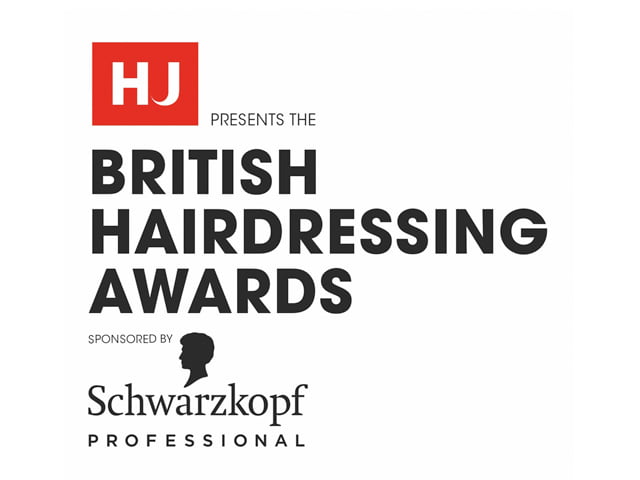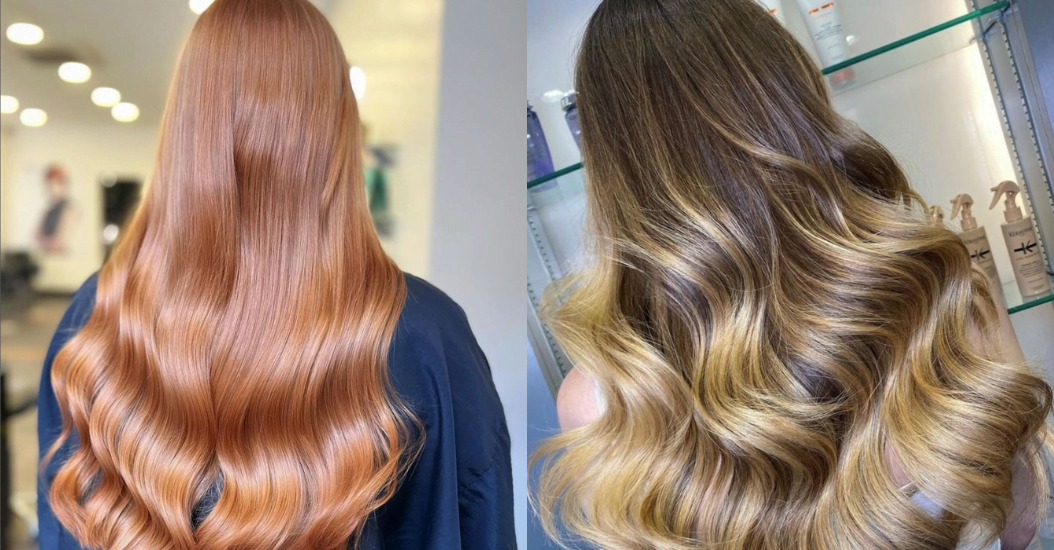The world of hair extensions has exploded in recent years and we now have more choice than ever. Explore clip-in, tape-in, weave and more, and discover your ideal hair extension type with our complete guide.
How Hair Extensions Are Made
Whatever type of extension you go for, they will fit into one of two categories; synthetic or natural.
Synthetic hair extensions are usually made from very fine plastic fibres created to mimic the look and feel of human hair. They are also cheaper than real hair extensions but don’t last as long and you need to be careful when styling as using heat will damage and melt the fibres.
Natural, or real, hair extensions are often valued more because they are hygienically taken from the hair donor. Throughout the process, the emphasis is on a clean environment, after which the hair is taken through a colour process to ensure optimum results. Most human hair comes from donors living in India and China and will blend into your own hair seamlessly. When they are well-maintained real hair extensions can last up to one year.
Rush Expert tip: if you want to know more about the differences in the two types of hair, be sure to ask at your local salon to get an informed opinion.
Types of Hair Extensions, Explained
Once you’ve decided why you want hair extensions, the next decision is which type bests suits you and your needs. From clip-ins to fusion, check out our breakdown of various types to work out which one is for you.
Clip-In Hair Extensions
If you’re someone who loves to switch up your look on a regular basis then clip-ins are ideal. You can add various colours and lengths to go from Margot Robbie in Barbie blonde to dramatic Zendaya in Dune in minutes, without even visiting the salon.
What’s more, this super easy option is also damage-free – there’s zero pressure, heat or chemicals needed. Simply choose your preferred length and colour and clip each piece exactly where you like. With proper care and regular wear, your clip-ins will last anything from 3-6 months.
Rush Expert tip: If you’re nervous about applying your clip-ins for the first time, don’t be scared to ask your stylist if you can book in for a demonstration or tutorial.
Tape-In Hair Extensions
Tape-in extensions are exactly how they sound. The extension has glue at the top which is attached to your natural hair, and another extension is attached on the other side of your natural hair. Unlike clip-ins which can be done at home, you really want a professional to fit tape-in extensions to ensure accurate application.
Tape-ins are seen as a semi-permanent option, lasting from 4-8 weeks with proper care. When it comes time to get them re-installed or removed, you will need to book a salon appointment to ensure safe removal but the extensions can be used again.
Rush Expert tip: Be sure to ask your stylist which shampoo and conditioner to use at home as some products can cause tape-in extensions to become loose and even fall out.
Micro Ring (Loop) Hair Extensions
Also known as micro bead extensions, this process sees tiny wefts of hair being attached to the natural hair by a small silicone-lined bead.
A special tool is then used to tighten the bead around the natural hair. As such this is a process that requires professional application, because if tightened too much, the bead can damage and pull on the hair.
Lasting up to 4 months, this method takes anything from 2-4 hours of salon time and you can wash them with your existing haircare products. These are a great semi-permanent option, as, when your natural hair begins to grow, you can go back to the salon to have the tiny beads tightened again.
Rush Expert tip: Talk to your stylist about how often you might need to come back to get the beads re-positioned.
Weave (Sew-In) Hair Extensions
Weave hair extensions have become an uber-popular option for women who want epic length and incredible volume too. We’re talking, big Beyonce hair here!
In this process, wefts of hair are sewn into your existing natural hair, which has been cane-rowed (plaited) directly to the scalp. This means that your scalp will be visible and care should be taken to hydrate the scalp regularly. Weaves should only be done by professionals to ensure the braids are not overly tight as the hair can add quite a bit of weight. More often than not, weaves will involve using real hair, which means it can easily be sewn in again after being removed and washed. You can also use synthetic hair but remember you won’t be able to do any heat styling so you might feel limited style-wise.
Rush Expert tip: As a weave is meant to look like your hair, the key to wearing it well is ensuring the cut and colour are perfectly suited to your skin tone and bone structure.
Curious about the best color technique for your hair? Discover more on our blog: Highlights, babylights, or lowlights.
Fusion (Pre-Bonded) Hair Extensions
This process sees the extension fused to the natural hair with glue or another adhesive via a tool that should only be used by professionals. As the glue is directly applied to the hair, this is a semi-permanent option that comes with a risk of damage – including breakage, scalp irritation and hair loss. Depending on your hair type, your stylist might encourage you to consider another option.
Wigs and Hair Pieces
Wigs have seen a rebirth over the past few years because they allow for immediate transformations and can be made bespoke via colour and cut. They are also a good option for anyone dealing hair loss who does not want to apply any tension to their scalp.
While wigs are great for covering the entire head, hair pieces are ideal for anyone who just wants to add a little oomph. A ponytail can quickly be added for a party look and a bun can be placed to add glamour to any bridal style. Just like with any other type of extension, wigs and hair pieces are available in synthetic and real hair options, but the synthetic ones will become tangled much more easily and cannot be styled using heat.
Rush Expert tip: If wigs and hair pieces are going to be your regular go-to, be sure to invest in a wig head, or two! This way you can keep your wigs tangle-free and ready to go.
Which Type of Hair Extension is Best for You
Now you’ve got a better picture of all the various types of hair extensions, it’s time to think about you and your lifestyle, because the best option is going to be the one that meets all your goals. Below is our list of top things to consider when choosing the right type of hair extension.
- How long do you need the results to last?
- How much maintenance are you prepared to commit to?
- How does your work/family life constrain your commitment to keeping your extensions healthy?
- How competent are you when it comes to styling your hair?
- Do you enjoy styling your hair or is it more of a chore?
Once you’ve answered these questions truthfully your hair stylist or extensions expert will be able to guide you in the right direction on your hair extensions journey. No matter what you decide, never underestimate the value of a consultation with a professional; they will have helped many clients just like you!
Unsure of your hair type? Read our Hair Types Explained blog.
Summary
- Hair extensions come in synthetic and natural varieties, with natural extensions being more valued for their seamless blend and longer lifespan.
- Key types of extensions include clip-in for flexibility and ease, tape-in for a semi-permanent option, micro ring for durability, and weave for volume and length.
- Consider maintenance, lifestyle, and styling competence when choosing extensions. Consultation with a professional is crucial for personalized advice and optimal results.
- Proper care and choosing the right type based on your needs can enhance your look without compromising hair health.
Ready to book your extensions appointment today? Find a hairdresser near you to book your appointment now.
FAQs
What is the best type of hair extensions to get?
The best type depends on your lifestyle, hair type, and maintenance willingness. Clip-ins are versatile, while tape-ins offer semi-permanence.
What are the 4 methods of hair extensions?
Clip-in, tape-in, micro ring (loop), and weave (sew-in) are the four main methods.
What is the most damaging type of hair extension?
Fusion (pre-bonded) extensions can be the most damaging due to the use of glue and adhesives.
What are the lowest maintenance hair extensions?
Clip-in extensions are the lowest maintenance, offering easy application and removal without professional help.
Do extensions ruin fine hair?
When properly applied and maintained, extensions do not necessarily ruin fine hair. However, choosing the right type and ensuring professional application is crucial to avoid damage.

